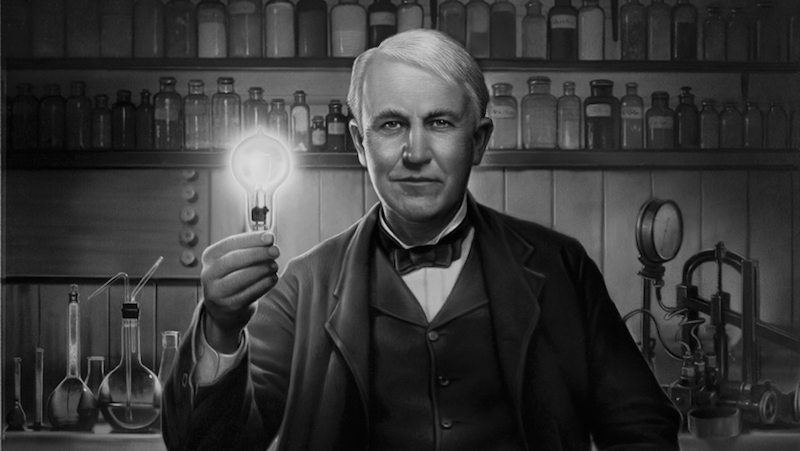Light Bulb
Episode #4 of the course “Inventions that changed the world and their stories”
Thomas Edison invented the light bulb, but he wasn’t the only scientist to develop the technology—the journey of the light bulb starts long before Edison patented it in 1879. In 1800, Alessandro Volta created a voltaic pile, which was a practical way of generating electricity. With an attached copper wire with zinc at either end, the pile conducted electricity. Volta’s glowing copper wire is considered the earliest manifestation of incandescent lighting.
Later, Humphrey Davy produced the electric arc lamp by connecting voltaic piles to charcoal electrodes in 1802. Later, in 1850, English chemist Joseph Swan helped with the cost-effectiveness of light bulbs by creating one that used carbonized paper filaments. Unfortunately for Swan, his first prototype for a cost-effective bulb never went to market.
In November 1879, Edison applied for a license for a carbon filament lamp. The patent submitted some named materials that might be used, wood, and cotton. Edison tried for several years to find the perfect piece for his novel bulb.
Months after the 1879 patent, Edison discovered that a carbonized bamboo filament could burn for 1,200 hours. Bamboo filaments were used in Edison’s bulbs until they were replaced by longer-lasting materials beginning in the 1880s.
William David Coolidge improved General Electric’s method of manufacturing tungsten lamps in 1910. Edison knew that tungsten was an excellent material for light bulb filaments, but the machinery for production was not available in the late 19th century. Tungsten is still used in incandescent bulbs today.
After creating the light bulb, Edison founded the Edison Electric Illuminating Company of New York in 1880. The company started with contributions from J.P. Morgan and other generous donors. The company constructed the first electrical generating stations that would power electrical systems, and the first one was opened in Manhattan in September 1882.
Share with friends

